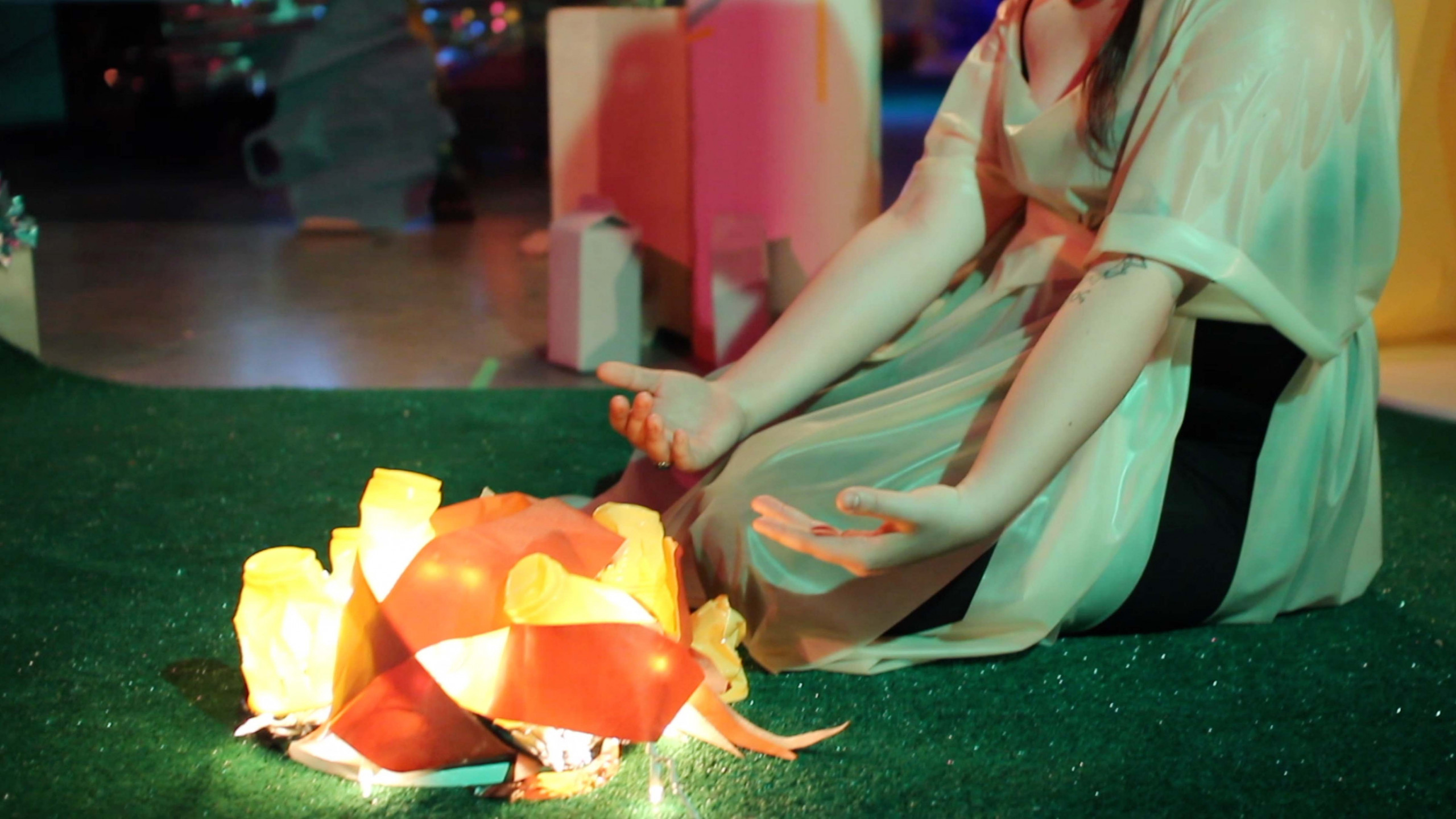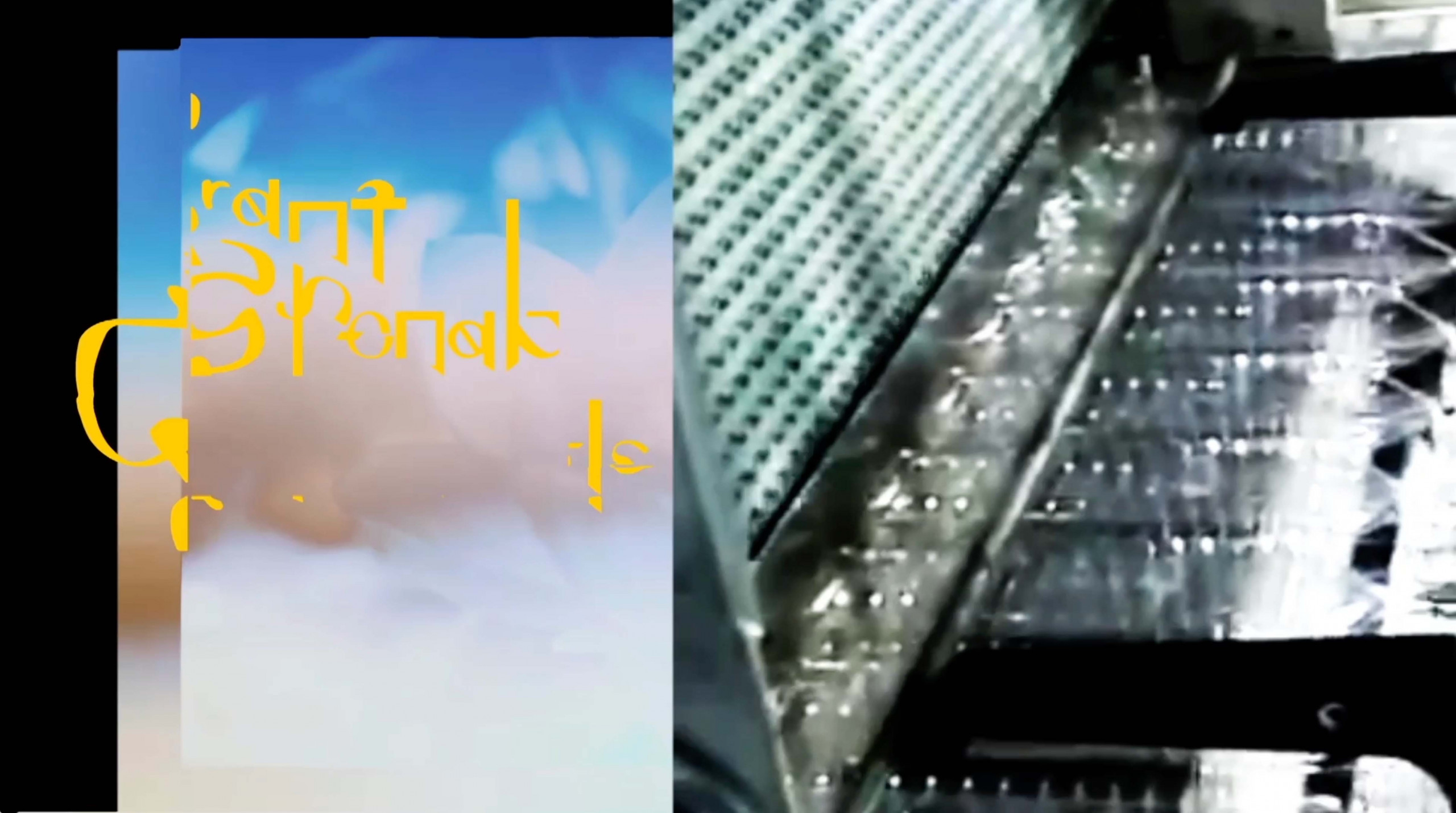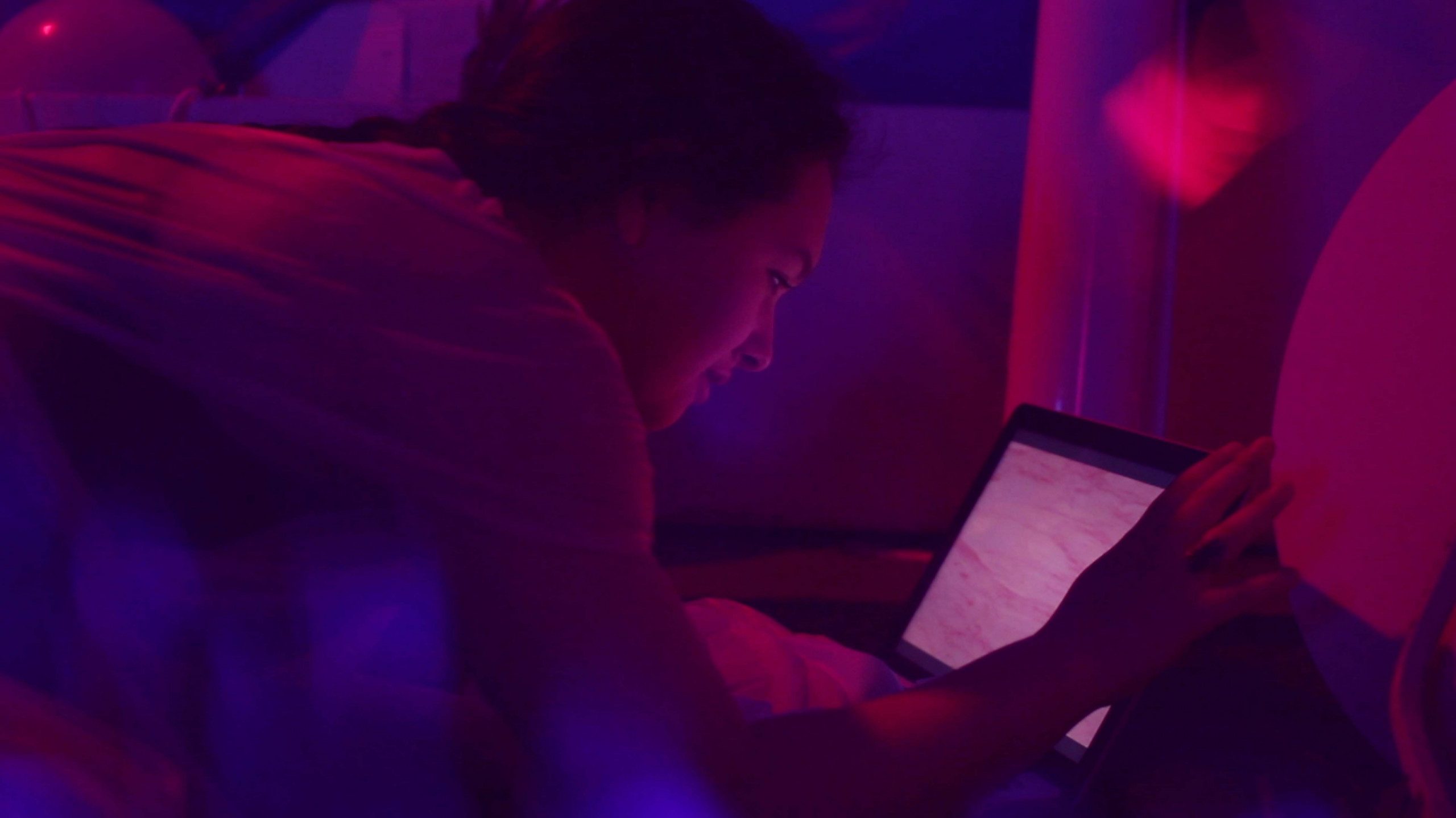From the pages of Prattfolio, this article is part of a series of conversations between faculty and students on the subject of student work. Here, Analia Segal, Adjunct Associate Professor of Fine Arts, and Lindsay McAleavy, BFA Film ’17, discuss McAleavy’s film The Plastic Pilgrim, “a theatrical film showing a girl traveling through a landscape installation in search of enlightenment in the Plastic Age.”
Analia Segal: There’s an interesting contrast here between fantasy and the reality of the interface in our lives. The girl confronting another world, through a screen, brings to mind Alice in Wonderland. Meanwhile, there are moments that ground me in contemporary reality; to use an actual computer, for example—it’s a reminder that the objects are what they are.
Lindsay McAleavy: The overarching idea was to create a synthetic world, with high-key colors, vinyl costumes, plastic plants, fake turf. But it was also important to address reality, the experience we all share in this world. I wanted the performers, and the audience, to feel transported but also to understand that the story was about something more real than the installed environment was making it seem.
AS: So much here is about surface, which is incredibly contemporary. One of my favorite scenes has the girl putting her hands over the plastic fire, trying to get warmth from it.

LM: She’s seeking anything real from it . . . There’s also the Mylar sheet, something that actually does create warmth, but on a deeper level, it’s not warm or comforting at all.
AS: In some films, the physical distance between the projection and the viewer adds to the work. In this case, a real physical interaction with the materials of the film could have pushed the experience so much further.
LM: I agree. I would have loved to do more with the installation. The final shot, when the girl—the pilgrim—is approaching the screen, in an ideal world, that’s where the film would be playing, on that screen [fig. 2].
AS: I’m curious about the film’s title, The Plastic Pilgrim—the choice of identifying the protagonist as a pilgrim, a person who journeys to a sacred place for religious reasons.
LM: I’ve always loved the book Siddhartha by Hermann Hesse, and a lot of the film’s plot is based on a similar theme, the search for enlightenment, a spiritual journey. Before I made the film, I’d taken a semester off and spent a lot of time doing street photography, and I was starting to become aware of the layers of trash in the city landscape. I would walk outside and think, this is sad, what do we do about this? The ultimate solution would be to eliminate all this trash, but first we have to accept where we are and who we are, accept the plastic world we live in.

AS: Does the typography in the opening have a religious reference?
LM: Ricardo Hernandez, a graphic design major, did the opening sequence and made that typography, with a Buddhist reference. Combining the type and the lotus imagery with factory footage was an attempt to connect Buddhism and meditation to the production of plastic bottles, finding spirituality in this repetitive process.
AS: The lens you use to deal with this subject matter could also describe your role as an artist—to raise awareness, but at the same time, to transcend your own experience using a poetic approach.
LM: For a long time, I didn’t know how I wanted to talk about what I was seeing. I’d started by doing long shots of never-ending series of trash bags on the sidewalk. But I had to do more. So I came to this idea of beautifying trash.
AS: I find it fascinating, your experience walking around the city, looking at trash. As artists, the question often comes up, where do we get inspiration? We’re not isolated in a little room—it’s everyday life that we deal with.
